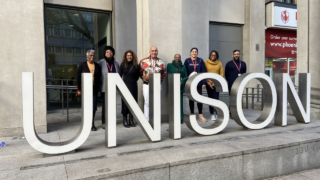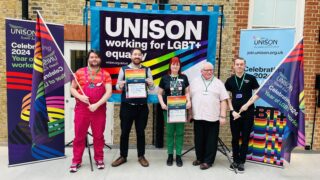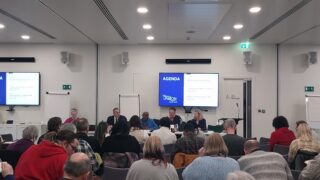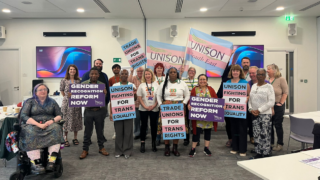The Participation Project began following a motion to Regional Council AGM 2020, seeking to review and consider barriers to activist participation across the region and established a Working Group to steer the review and agree recommendations to be proposed to the next Regional Council AGM.
In 2020, Regional Council noted:
- That a number of the regional meetings including the Region Council have not been quorate and therefore cannot carry out their business, make decisions, and take action, with some motions not being heard for over a year.
- This leads to activists not wanting to attend a meeting that does not achieve what it should
- There was a 6% cut across public sector employers in facility time spending from the previous year.
- Our branches in the region continually experience growing pressures to represent members due to privatisation, commissioning and the effects of austerity on our services at a time where our facilities to carrying out union work is being decimated. This has the knock on effect of our activists struggling to obtain release to attend the number of meetings across our regional democracy and presents a barrier to participation which can be seen in the amount of vacant seats on regional committees.
- If we are to support our current members, grow as a union and ensure we have an activist base to meet these challenges, we need vibrant and active regional structures that work for all members and activists and maintains UNISON as a member led union.
Through the course of the project, and as the pandemic unfolded, a number of other factors were additionally brought into sharper focus. Virtual meetings opened the doors of regional democracy to many time-poor activists and those with difficulties attending face to face meetings, whilst bringing their own challenges including access to technology and how to conduct inclusive meetings.
Throughout the review, the Working Group adhered to guiding principles of openness, transparency and ensuring all decisions were data-driven. The Group continuously kept at the forefront of their discussions the voices of those who are not currently involved, and the need to attract new members and activists whilst also balancing this with improving the ability of existing activists to participate.
In total 677 members, branches and activists have participated in the review over the past 15 months at every stage of the project. Members and activists from across the region have given feedback, exchanged ideas and shared their views. This data-driven approach has steered the project outcomes and Working Group recommendations at every phase.
The Working Group will be putting a report to Regional Council AGM 2022 proposing a number of measures to form the basis of a plan to improve participation as well as a number of rule changes to support this plan, as well as a proposal to continue some of this work into 2022.
Key Statistics
- Across all surveys, focus groups and informal feeback, ‘Time’ was continuously identified as the most significant barrier (over 75%), with location and length of the meeting also featuring highly. This also included difficulties with caring responsibilities, workload, travel time itself to physical meetings, unable to balance this with other work responsibilities, and general exhaustion as well as highlighting the environmental impact of physical meetings.
- Over 50% of members surveyed stated that one of the key barriers was not understanding what the committees do; their purpose and remit were unclear. Members also highlighted caring responsibilities, not knowing anyone and timing as other key barriers.
- Over 50% said that the same people speaking was the biggest negative at meetings, with dominance of the same people at meetings highlighted throughout the consultation
- Over 66% of respondents said the biggest positives were the networking aspect of regional meetings, and nearly 60% enjoyed finding out more about what’s happening across the region.
- 66% of respondents to the branch survey wanted to see more use of video conferencing, over 50% of respondents wanted to see inductions for new members.
- The vast majority of committees have experienced an increase in attendance since the introduction of virtual meetings. There was a 161% increase in attendance at Regional Council AGM, a 140% increase in attendance at Finance Committee, 117% increase at Publicity & Campaign, and 40% increase at Education, Training and Development. All the regional SOG committees saw an overall increase, with an impressive 283% increase at one of their AGMs and all Service Group Committees (except Community) also saw an increase.
- At least 66% of those consulted supporting an increase in virtual meetings and 83% of respondents stating that the virtual Regional Council AGM was easier to participate in than a physical AGM. 41% of disabled respondents reported that physical meetings themselves impacted their ability to participate.
- 66% of respondents to the Access Survey said virtual meetings should last 2 hours or less, with 24% stating 1.5 hours or less and only 15% of respondents stated that meetings being limited to an hour and a half and finishing on time has negatively impacted their ability to participate. 51% said physical meetings should last three hours or less, with 39% stating they should last two hours or less.
Further Information
- 2020 regional council AGM motion Regional Participation review
- Interim Working Group Report March 2021
- Interim Working Group Report April 2021
- Interim Working Group Report July 2021
- Virtual Meetings Implementation Options Paper
- Workstream Two- Committee Purpose & Structure
- Review and recommendations – model constitutions
- Review and recommendations – online meetings
- Review and recommendations – access
- Proposed Updated Meeting Access Standards






